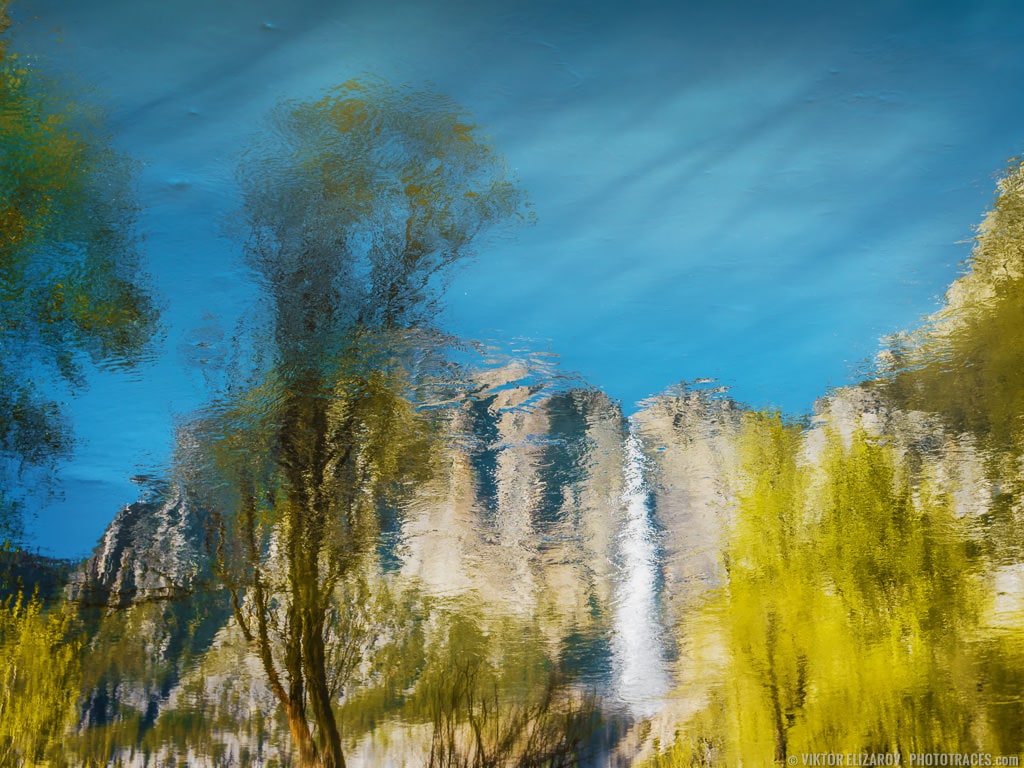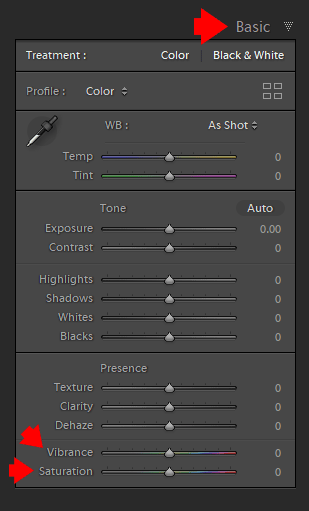What’s vibrance vs saturation?
If you happen to’ve achieved any form of enhancing in your pictures, whether or not or not it’s by way of Photoshop or perhaps a primary cellphone editor, you’ve possible encountered the phrases “vibrance” and “saturation.

These two images phrases could seem to imply the identical factor, however they’re, actually, very different- and understanding what every means is essential for enhancing footage successfully.
What’s Saturation in
Pictures?
The time period ‘saturation’ usually describes the extent at which one thing is absorbed. For instance, a sponge is closely saturated with water.
In images, saturation refers to how pure a shade is. How crimson is the crimson? How blue is the blue? You possibly can think about shade being “absorbed” within the {photograph} like a sponge, with a better saturation leading to a extra important shade.
A saturated crimson will likely be deep and true, whereas a
desaturated crimson will likely be fairly grey and boring.
Cameras and lenses function on gentle. On a
technical stage, saturation is definitely only a description of how intense or
boring the sunshine of a selected frequency or wavelength is coming from a lightweight
supply. That is truly why the colour
of an object modifications as its gentle supply modifications, regardless of the thing at all times
having the identical shade.

What’s Vibrance in Pictures?
When one thing is vibrant, that signifies that
one thing is shiny and placing. Though vibrance is an actual phrase (as any
dictionary can attest)- with reference to images, vibrance doesn’t truly
exist!
Wait, what? How can vibrance not be actual?
It’s true. Vibrance will not be an actual idea in
images. Vibrance was truly invented by the corporate Adobe, the
masterminds behind the industry-standard enhancing packages Photoshop and
Lightroom.
Saturation could be decided by way of mathematical formulation and science as a result of it’s an precise property of sunshine, however vibrance can’t actually be measured. Nevertheless, Adobe created the time period vibrance to differentiate between the 2 sliders the corporate developed, the Saturation slider and the Vibrance slider.
When excited about packages from a pc vantage level, there wanted to be a technique to improve the saturation of a shade with out altering the colour itself. From Adobe’s personal description:
“Vibrance adjusts the saturation in order that clipping is minimized as colours method full saturation. This adjustment will increase the saturation of less-saturated colours greater than the colours which can be already saturated. Vibrance additionally prevents pores and skin tones from changing into oversaturated”.
Adobe
In a manner that may be understood simply,
vibrance is a sort of ‘sensible’ saturation that adjusts colours in a different way from
the normal saturation slider. Vibrance adjusts the extra muted colours
fairly than intensifying the already saturated colours.
To conclude these definitions, saturation in
photograph enhancing adjusts all the pixels in {a photograph} whereas vibrance solely
adjusts the muted pixels in {a photograph}. Pixels are the tiny little squares or
dots of shade (image parts) that when put collectively make a whole
image.
The Significance of Vibrance vs Saturation and Colours
Colour principle is a really fascinating and important idea in images. Colour principle refers to how shade impacts the psychology of individuals. Every shade has the capability to convey out a selected response from whoever seems to be at that shade. For instance, shiny crimson tends to be an thrilling shade whereas gentle blue is calming.

The colours you employ on your images will impression how a viewer interprets your work. If you happen to make the colours too saturated with a moody image or lack vibrancy for an thrilling image, your viewers received’t be capable of perceive your {photograph} as a result of the colours are counterintuitive to the subject material.
Associated: Utilizing Superior Masks in Lightroom
Having the ability to correctly gauge use
vibrance vs saturation in your enhancing course of could make or break your
images profession.
The essential pointers you possibly can maintain on to are
these:
Pictures of material that’s speculated to
incite happiness, optimistic empathy, or power needs to be pretty saturated and
vibrant.
Pictures of topics which can be speculated to be
moody, unhappy, heartbreaking empathy, or peaceable are much less saturated and fewer
vibrant.
3 Ranges to Management Saturation in
Your Pictures
There are three key methods to regulate the saturation in your pictures: the saturation slider, vibrance slider, and HSL Panel.
Though Adobe pioneered saturation, HSL panels, and vibrance sliders, these are typically prevalent in different enhancing packages too. So the next data on three completely different strategies of controlling saturation will not be unique to Photoshop or Lightroom.
1. Saturation Slider
The saturation slider impacts all the colours in a picture evenly till they’re pure in tone. If you happen to even faucet the saturation slider slightly bit you’ll discover how rapidly colours can intensify. Moderation is essential right here! Pulling to the left makes colours extra grey, pulling to the fitting brings them nearer to their most true shade.
Associated: Easy methods to Retoche Portraits in Lightroom
Saturation slides are wonderful for nonetheless life pictures and landscapes, as there may be much less probability that adjusting all the colours on the similar time, in the identical manner, will make a picture look too synthetic. For pictures that contain folks or pure colours, saturation can in a short time make pores and skin tone look clown-ish.

2. Vibrance Slider
The vibrance slider, as talked about earlier than, solely tends to accentuate the muted colours in {a photograph}. It takes quite a bit longer for the vibrance slider to make a picture look too phony or garish. I at all times begin with the vibrance slider to at the least even the depth of colours out earlier than making saturation changes. Very similar to saturation, pulling to the left lowers the vibrancy and pulling to the fitting will increase the vibrancy.
3. HSL Panel – Selective Saturation
HSL stands for “Hue, Saturation, and Luminance” and is a panel field in Adobe Lightroom (with related panels in different packages). I prefer to say that that is the panel that adjusts every of the colours individually. Every slider is split by colours: crimson, orange, yellow, inexperienced, aqua, blue, purple, and magenta.
The Hue is the shade of a shade on a gradient. In technical phrases, the hue is the wavelength of the sunshine mirrored. This describes why an object that’s one strong shade can change its shade depending on the sunshine or the quantity of sunshine that hits it. On the HSL panel, the hue can change how particular colours look. For instance, the reds could be made to be extra orange in shade or extra crimson.

Saturation on the HSL panel determines how intense a shade is. Pulling the slider to the left makes the colour extra grey; pulling the slider to the fitting makes it extra true.
Verify my Lightroom Workflow Tip #3 – Easy methods to Use Selective Saturation
Luminance lightens or darkens a selected shade. Luminance refers back to the reflective brightness of colours. I take advantage of this slider quite a bit to make sure colours darker. The commonest use of Luminance sliders is to make blue shade of the sky darker.
How Do You Decide Whether or not to
Use Saturation or Vibrance?
If you have to do a extremely fast edit, you possibly can
rapidly decide whether or not saturation or vibrance is greatest on your picture.
If all the colours within the {photograph} are
fairly even of their depth (or lack thereof), then saturation is greatest.
If in case you have colours or tones in a picture which can be all completely different intensities OR would look flawed if enhanced an excessive amount of, vibrance is the way in which to go. Normally, you’d use the 2 sliders in unison, although, as you could discover that you really want the depth of the intense colours lowered a bit whereas mentioning the vibrancy of the much less intense colours. This could even your complete image out.

Distinction, Brightness, Highlights, and Shadows All Have an effect on Saturation and Vibrance
Photograph enhancing has extra sliders and changes
than simply saturation and vibrance. You have got distinction, brightness, and sliders
that management the lightness or darkness of shadows and highlights.
Whenever you edit pictures, each change is an
particular person variable that impacts the remainder of the variables. For instance, for those who
decrease your shade saturation or vibrance after which improve the distinction, you’ll
discover that the colours turn into vibrant and intense once more. Likewise, for those who
improve saturation or vibrance after which darken the picture, the colours turn into
muted once more.
Take note of how your different edits have an effect on the
colours. I at all times recommend doing saturation and vibrance changes because the final
step for this very function.
Saturation vs Vibrance | Remaining Ideas
In conclusion, using saturation in images is essential. How you employ it’s at your personal discretion, however fortunately photograph enhancing software program made this management a bit simpler for you by dividing shade depth changes into saturation and vibrance!
